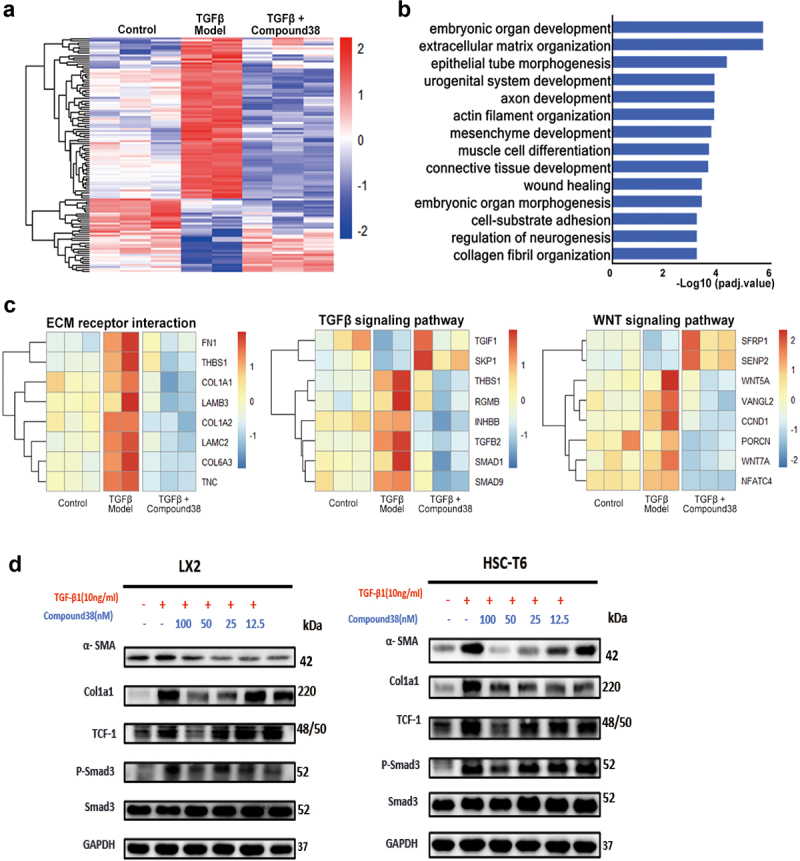Figure 6.

Compound 38 blocks fibrosis-related pathway activation in LX2 cells.
(a–c) Total RNA for RNA-seq analysis was extracted from LX2 cells in the control group (n = 3), TGF-β exposure group (n = 2), and compound 38-treated group (50 nM, n = 3). (a) Heatmap showing the different clustering gene expression patterns among the control, TGF-β1 exposure, and compound 38-treated groups; differentially expressed genes were filtered for an adjusted P value < 0.05 and absolute value of fold-change > 1.5. (b) Gene-annotation enrichment analysis performed on differentially expressed genes between the TGF-β exposure group and the compound 38-treated group. (c) Heatmap revealing the key genes of biological processes and pathways affected by compound 38. (d) Western blot analysis to validate activation of the TGF-β/SMAD and Wnt/β-catenin signaling pathways in the human HSC cell line LX-2 and the rat HSC cell line HSC-T6. *P < 0.05, **P < 0.01, ***P < 0.001, ****P < 0.0001 compared to the TGF-β-induced group. #P < 0.05, ##P < 0.01, ###P < 0.001, ####P < 0.0001 compared to the control group.
